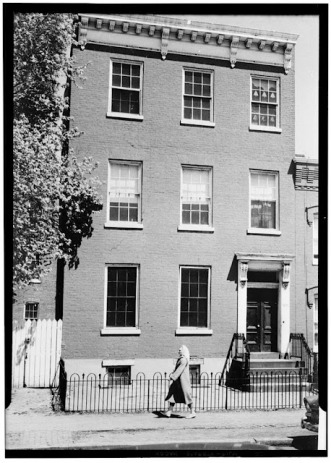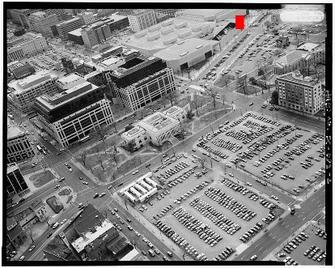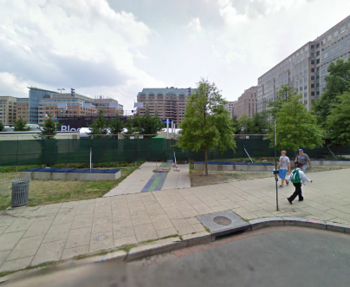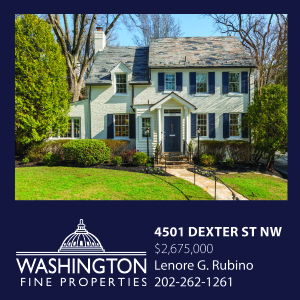Your Eyes Deceive You Not, This is the Neighborhood That Became a Parking Lot

One of the most tragic episodes in Washington's history (aside from the British burning the place, building highways through the city, 9/11, and a dozen other things) was the destruction of the Mt. Vernon Square neighborhood, not once but twice in a 15 year time frame. This neighborhood was one of the life blood centers of the city. Most of Washington's major streets went near it, through it or to it such as Massachusetts Avenue, New York Avenue, G Street, H Street, Eye Street, 7th, 8th and 9th Street. They converged in a tidy collision on the federal city grid and produced a schizophrenic mix of residential and commercial hyper-condensed urban energy.

After years of dying a slow death due to lack of investment of all kinds, the invention of the suburban mall, crack, porn and prostitution; the two final death blows to the area came when the Barry Administration decided that it needed an enormous convention center in 1981. It was bad enough that they removed 300 buildings from 9th Street and New York Avenue and down to G Street,they did it again 15 years later and laid waste to the north for today's convention center that sits atop Mt. Vernon Square.
Many visitors ask residents "Why can't the rest of the city look like Georgetown?" The answer is painful: It did, we tore it all down.
Above are typical Italianate houses that can be found in Georgetown today. These sat on the Western edge of where New York Avenue meets Eye Street today (See the red square in the aerial photo). It was typical of the elegant walk-up townhouses of the blocks on the western and northern side of the square. The other types of buildings were theaters, small grocery and
hardware stores, haberdashers and parts shops. A People's Drug Store was on every second block here. It was home to 5,000 people and employed another 3,000 in its prime.

The loss of the neighborhood isn't the fault of the planners and politicians who wanted the two convention centers, it is the fault of those who let the neighborhood die
and decay in the first place and then didn't see how large the problem was.
Hindsight is 20/20 here but this hardly is the first time an American city had befallen hardship and ruin in the 1960's, but this happened to the gleaming new city of the Grand Republic?
We collectively went so far that we deemed the area unsavable and we 'erased and replaced' our embarrassment and took a huge part of our Washington and American architecture and history with it.

There is a website dedicated to just how far we went up until 1990, visit The Ruined Capitol.




